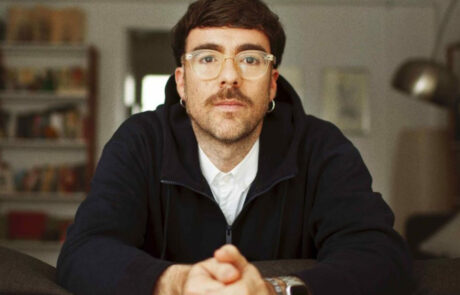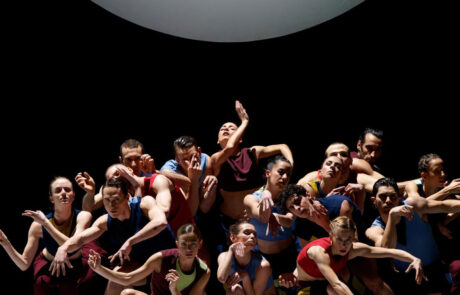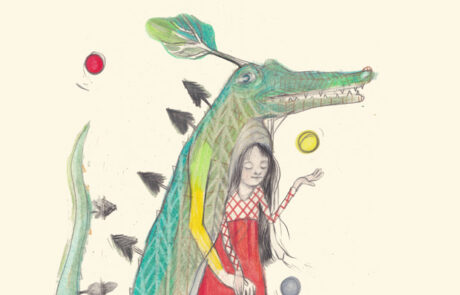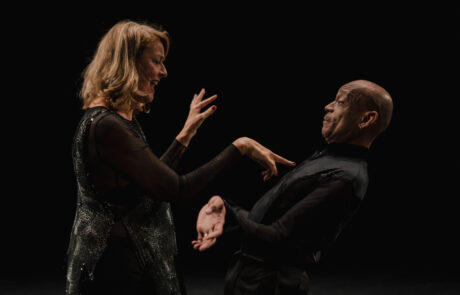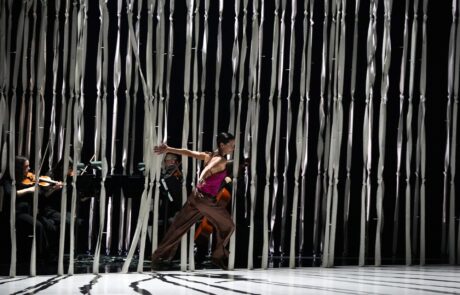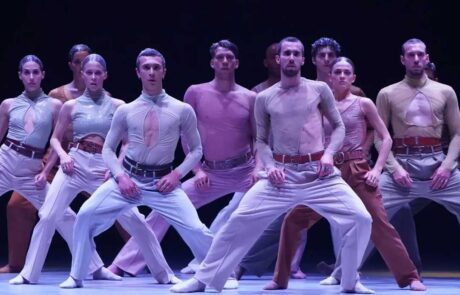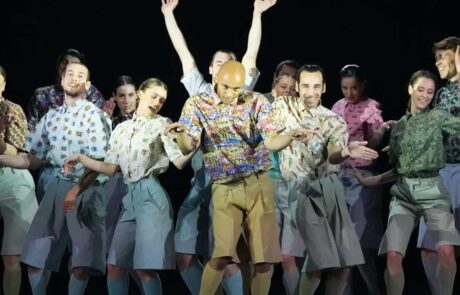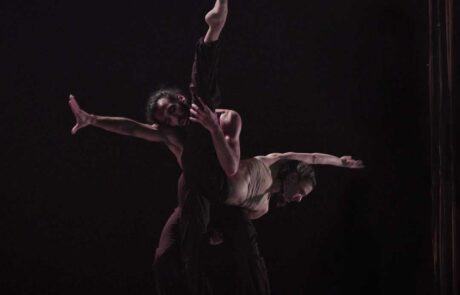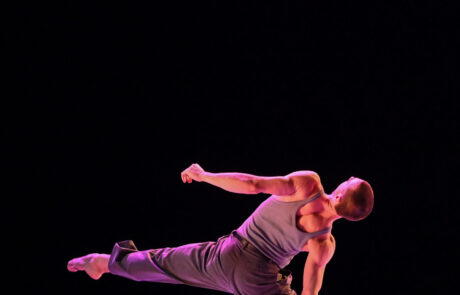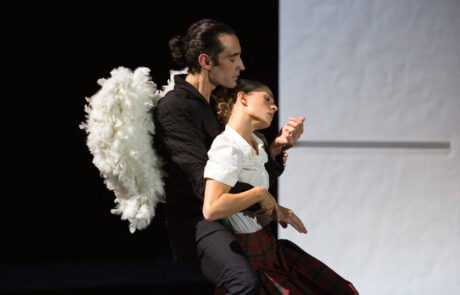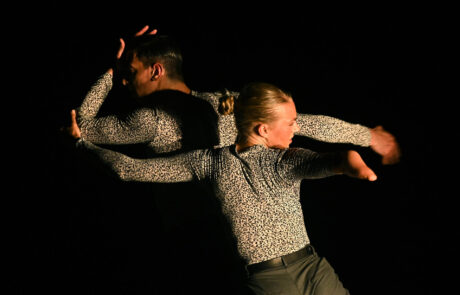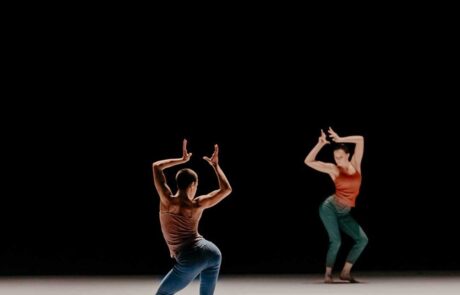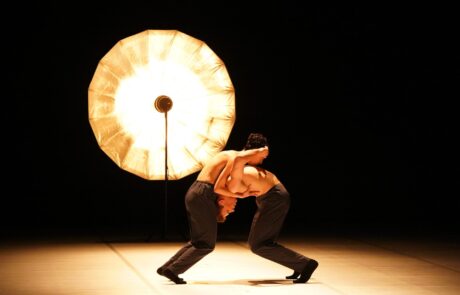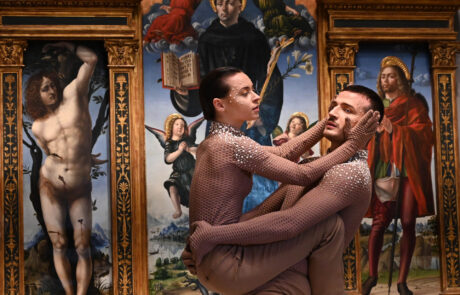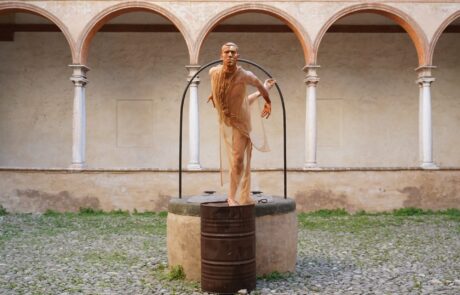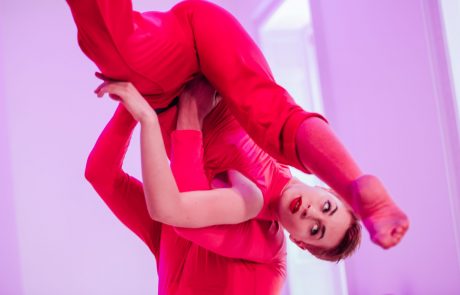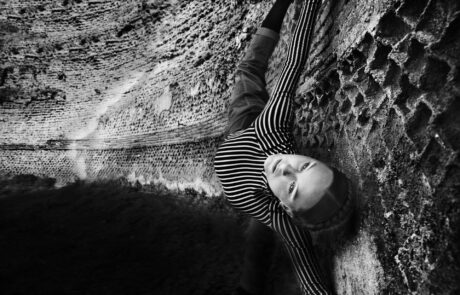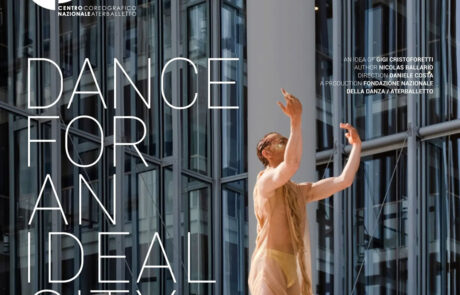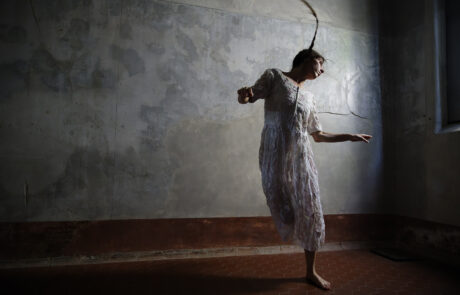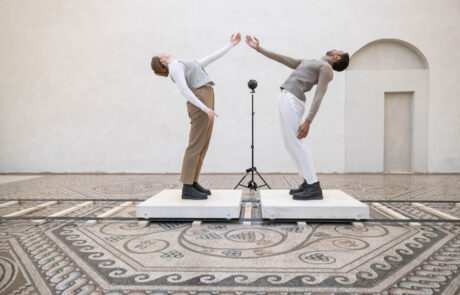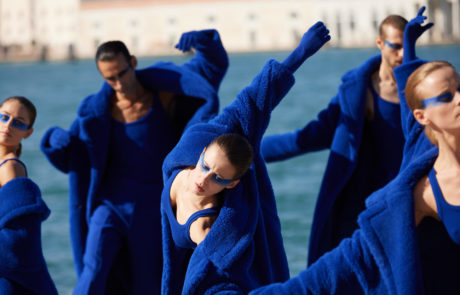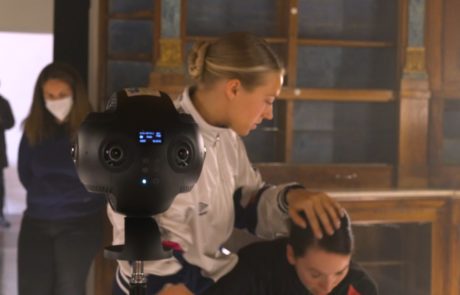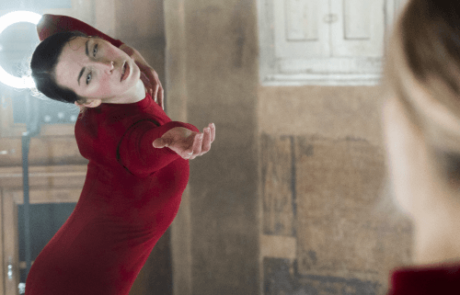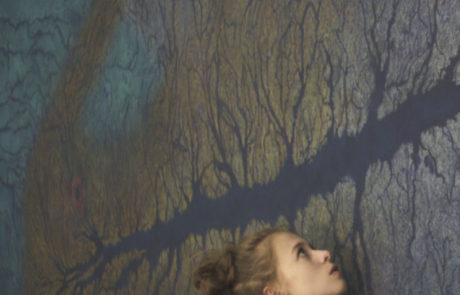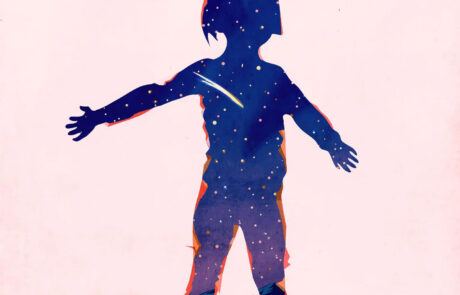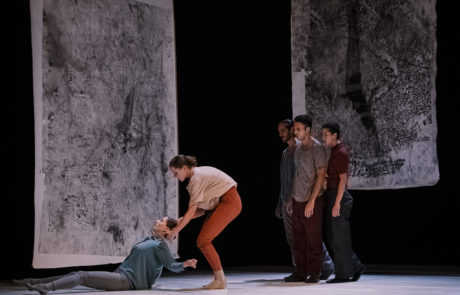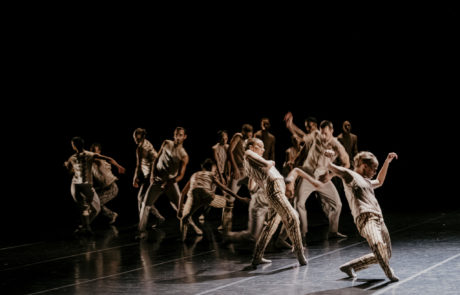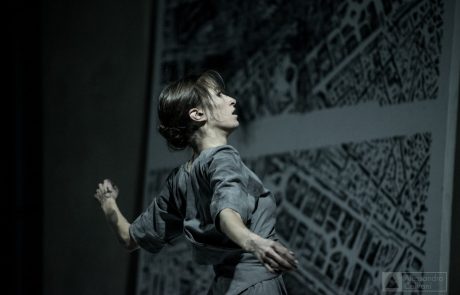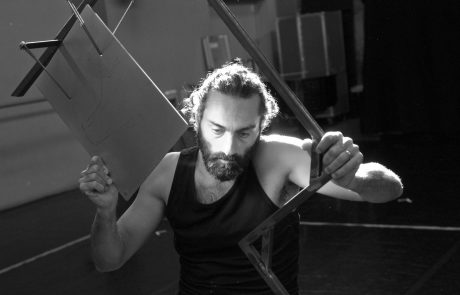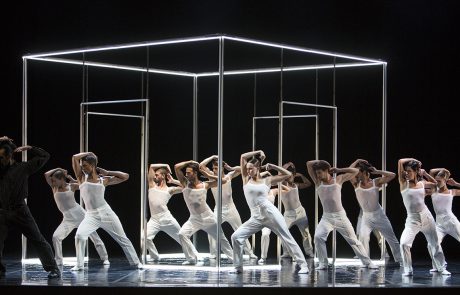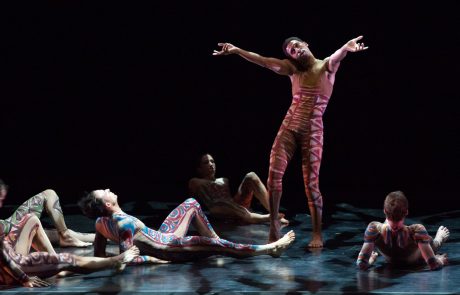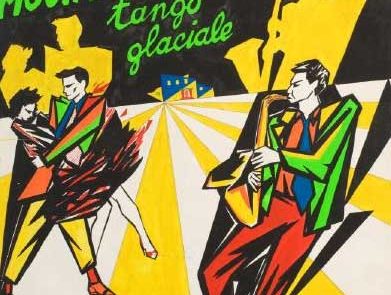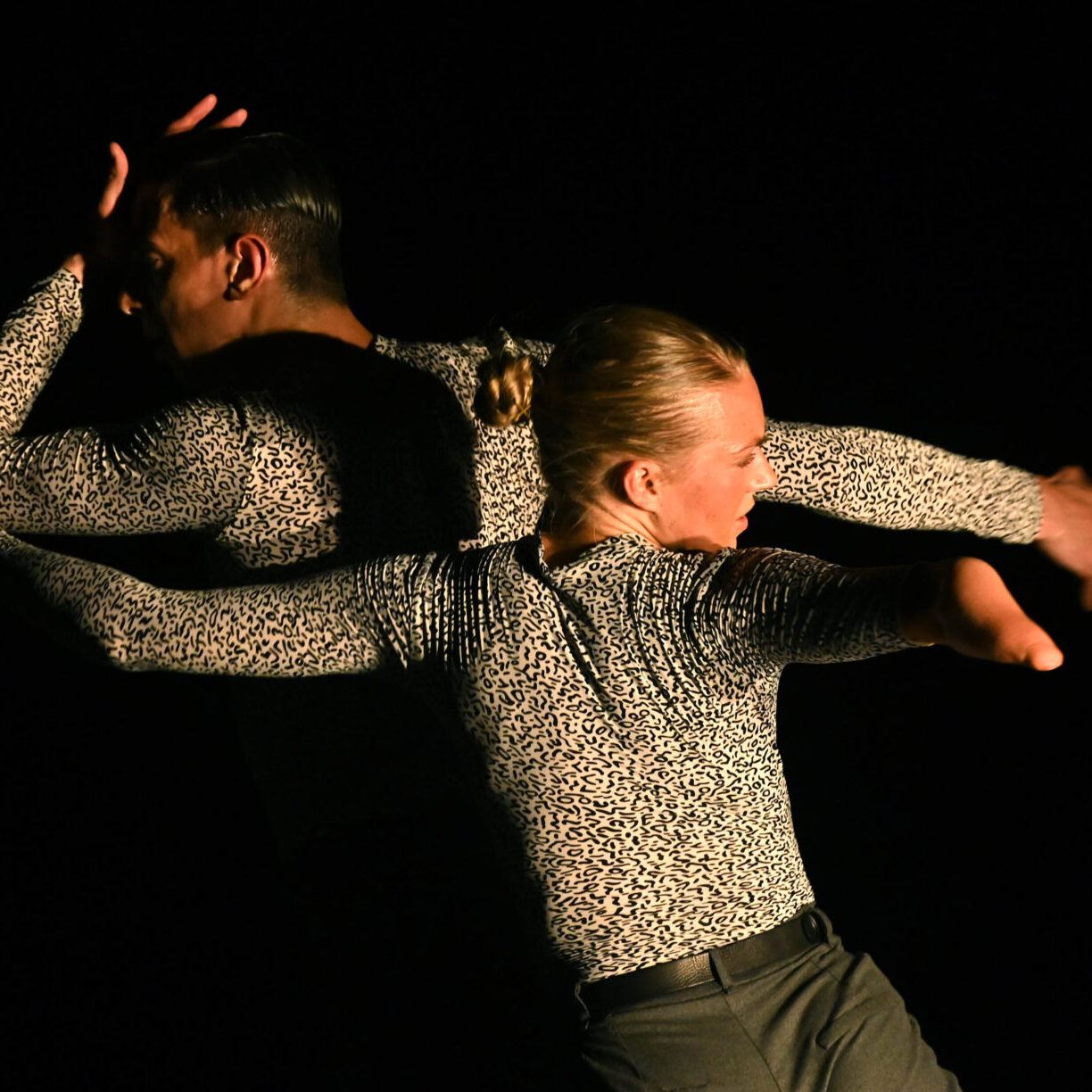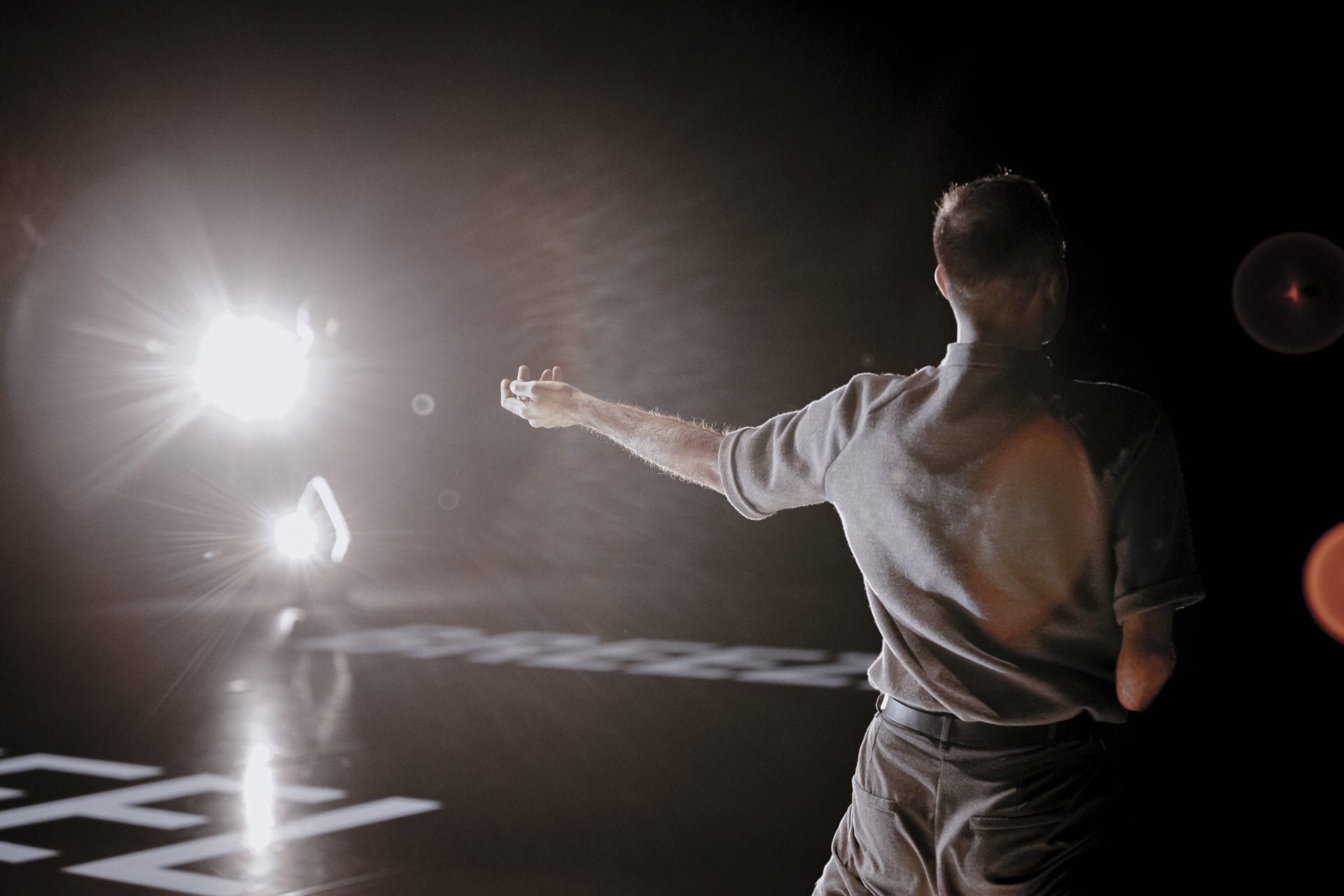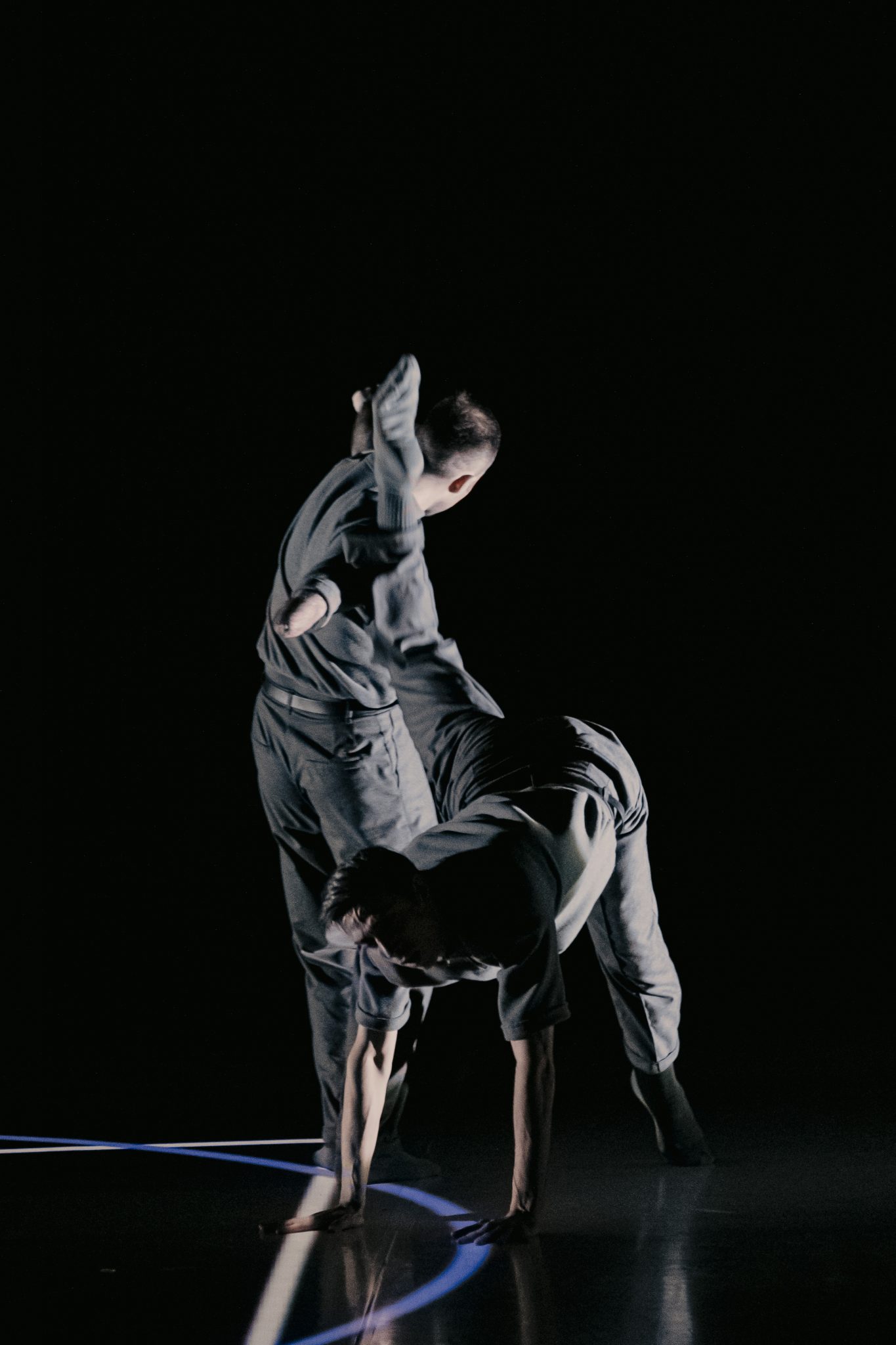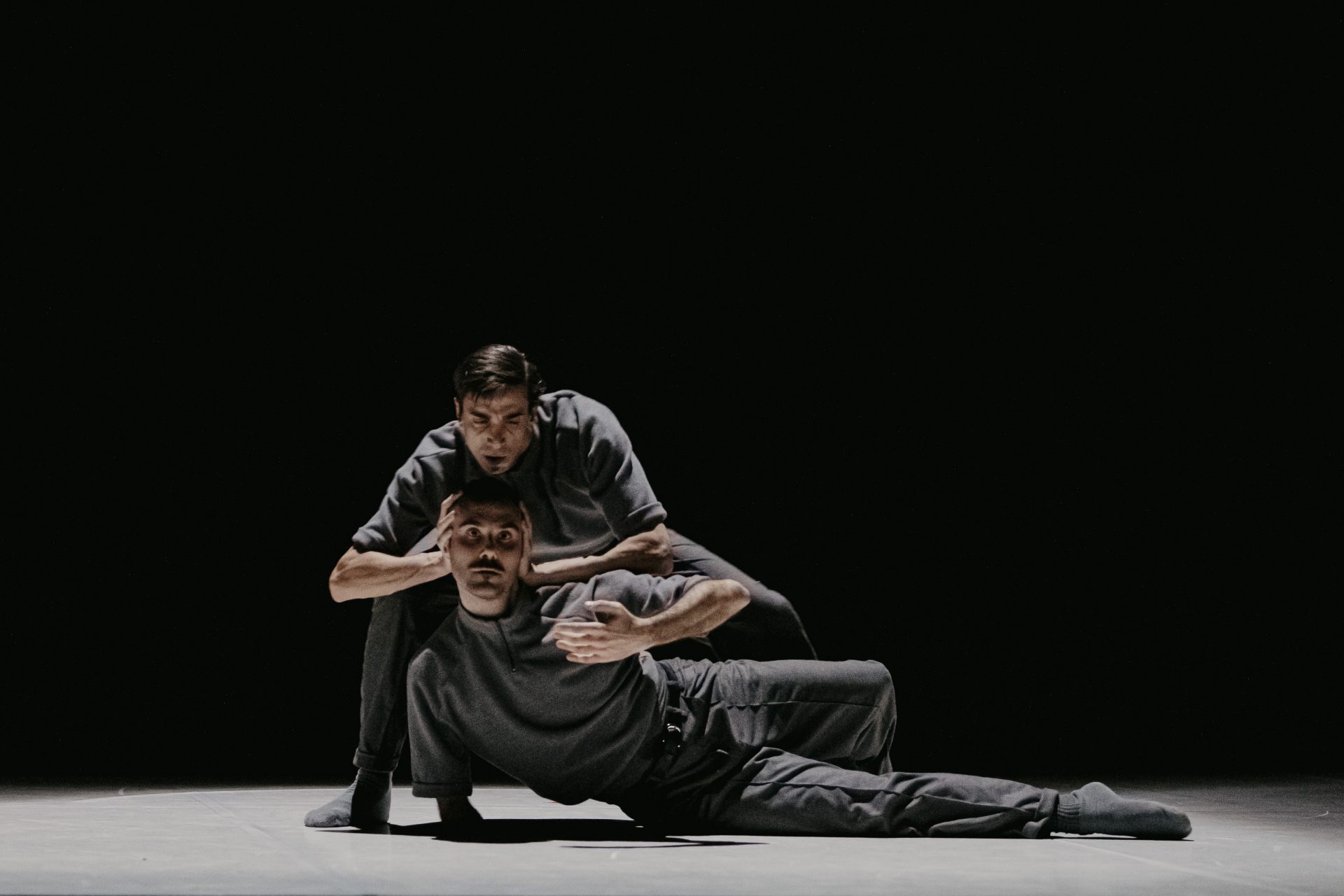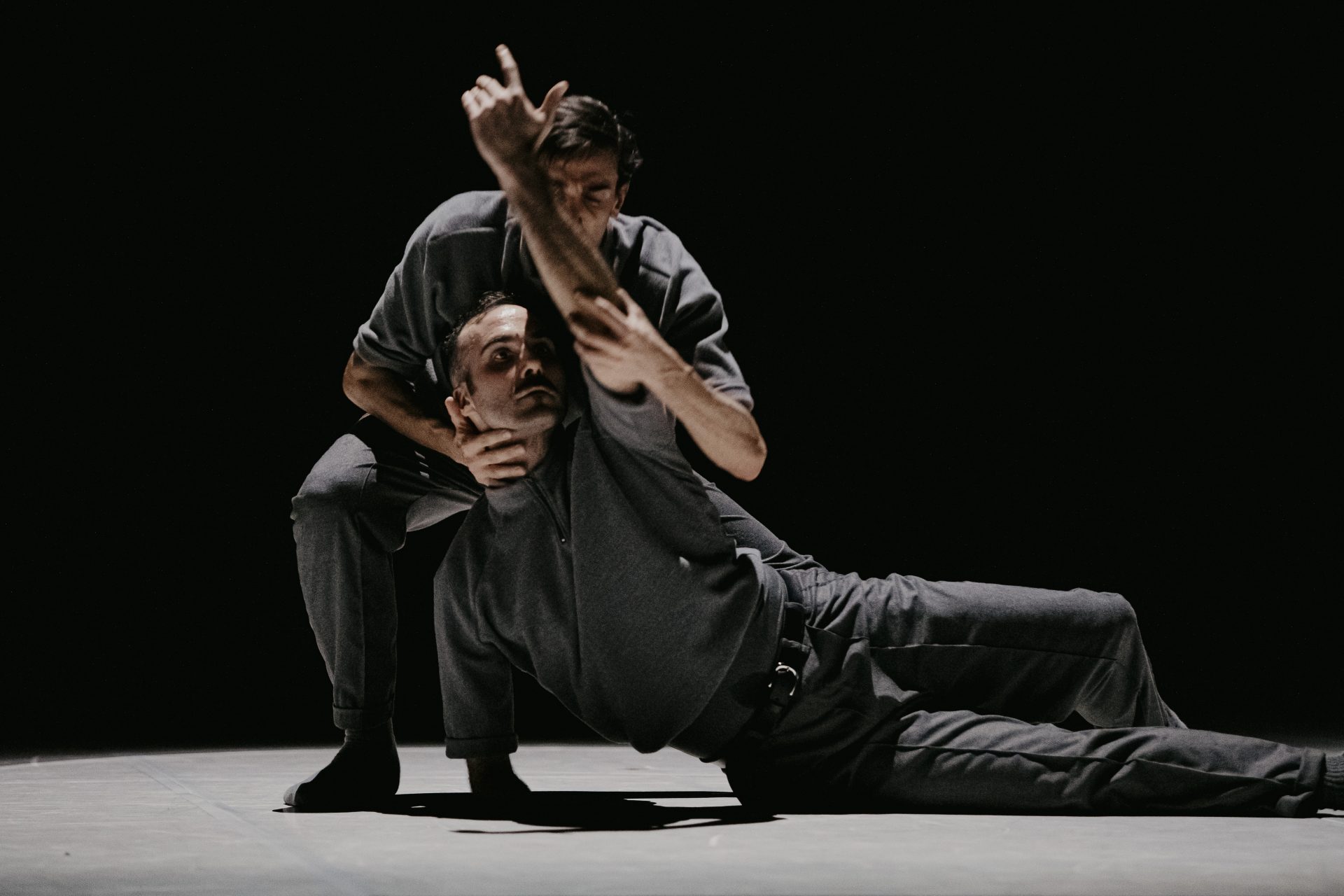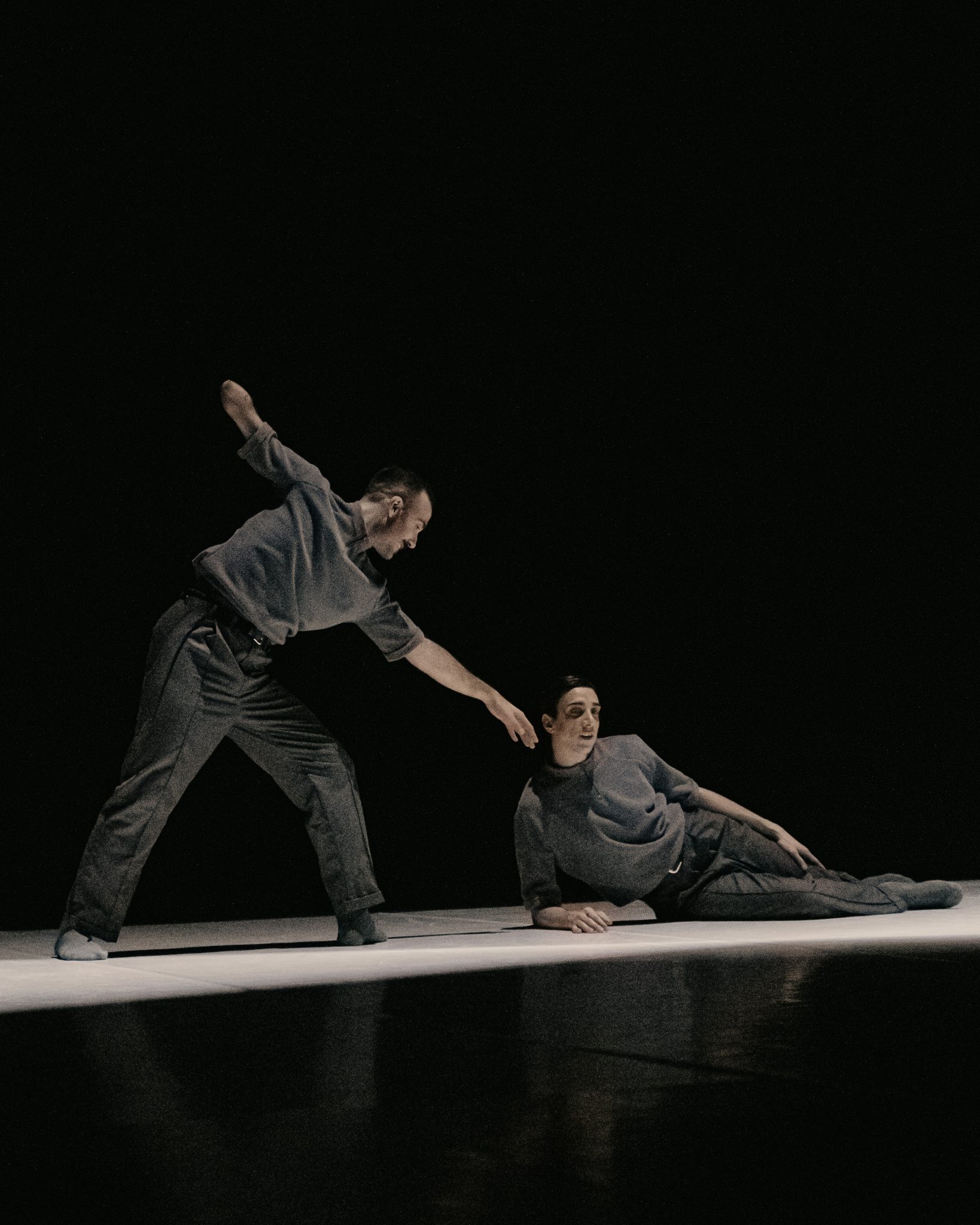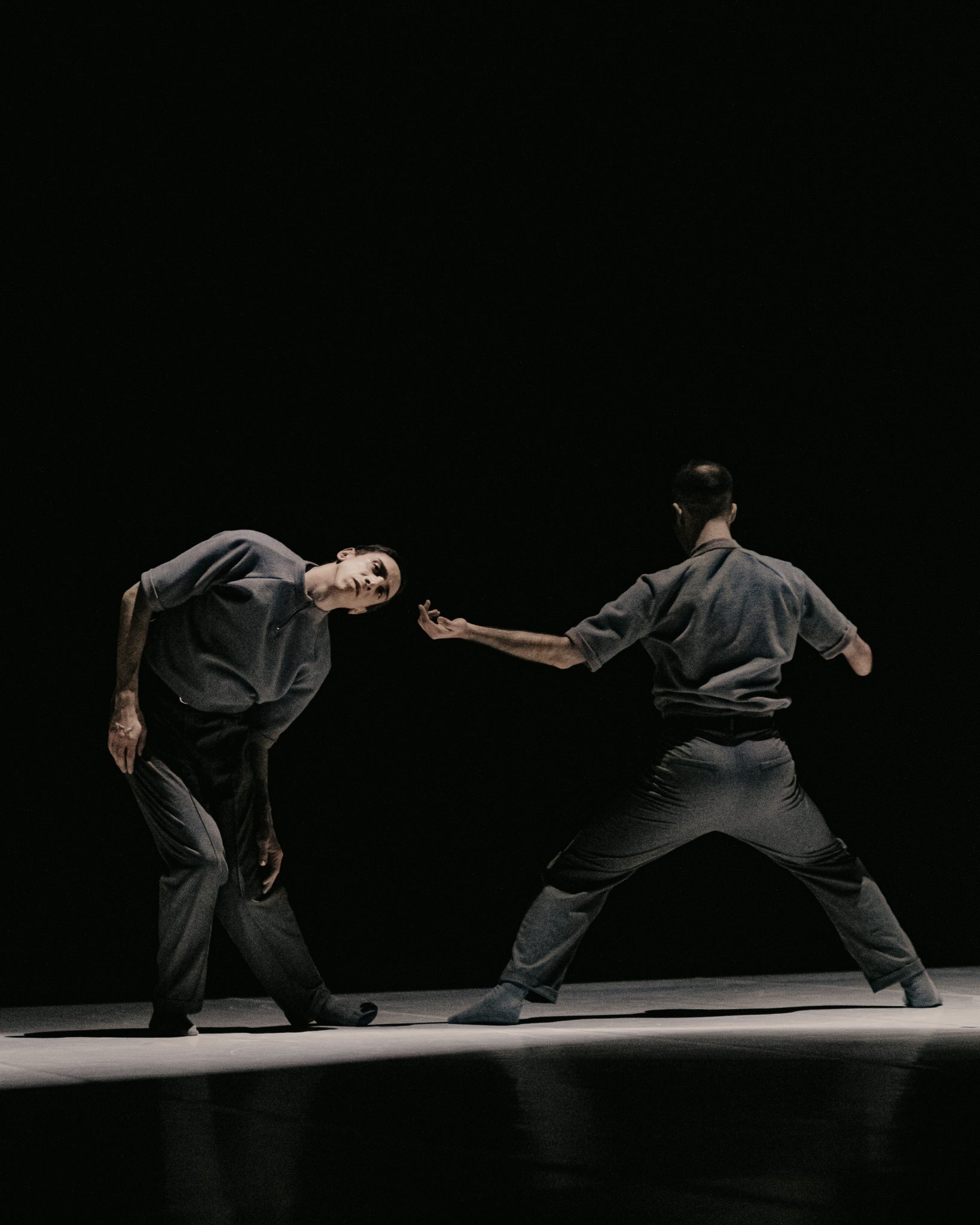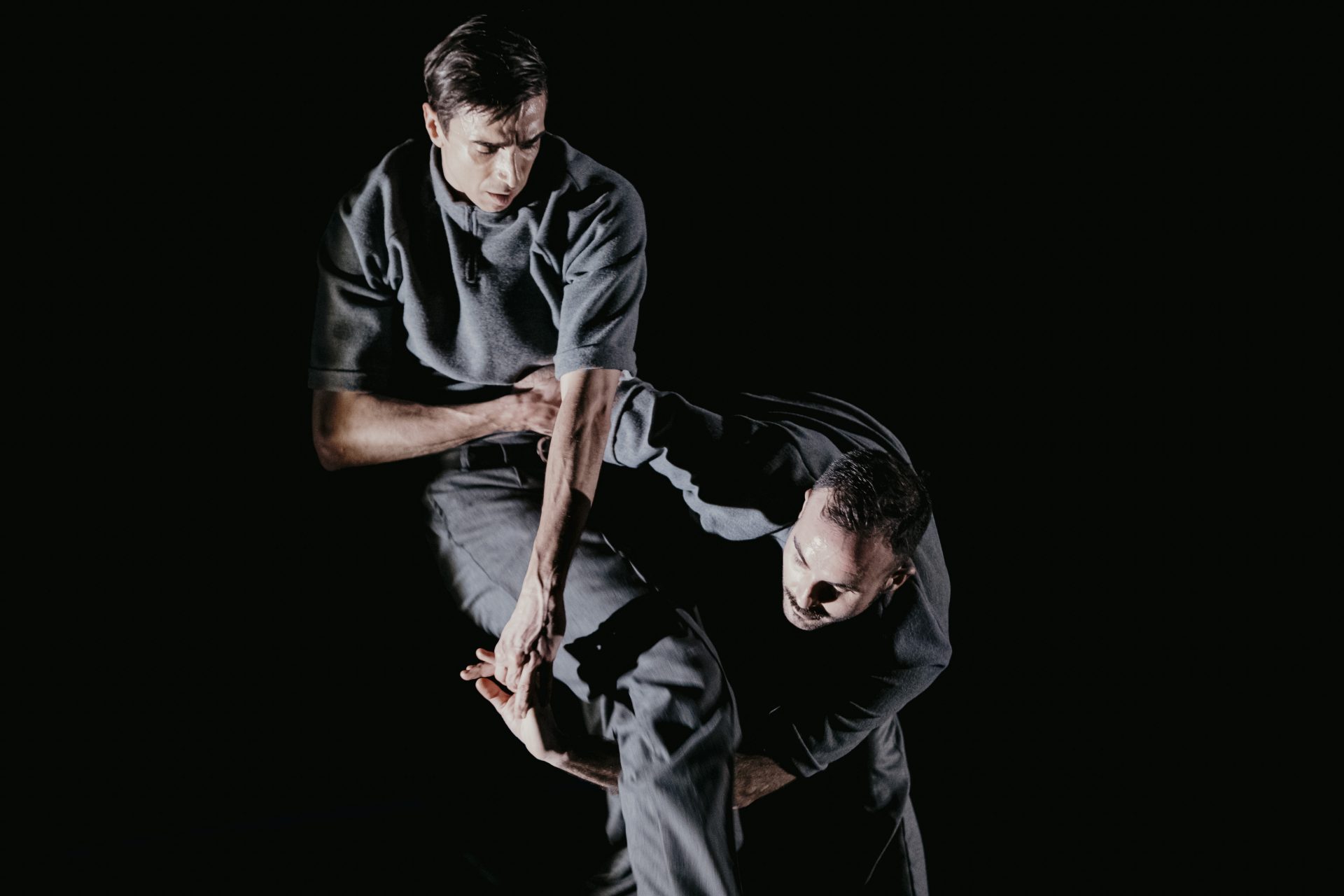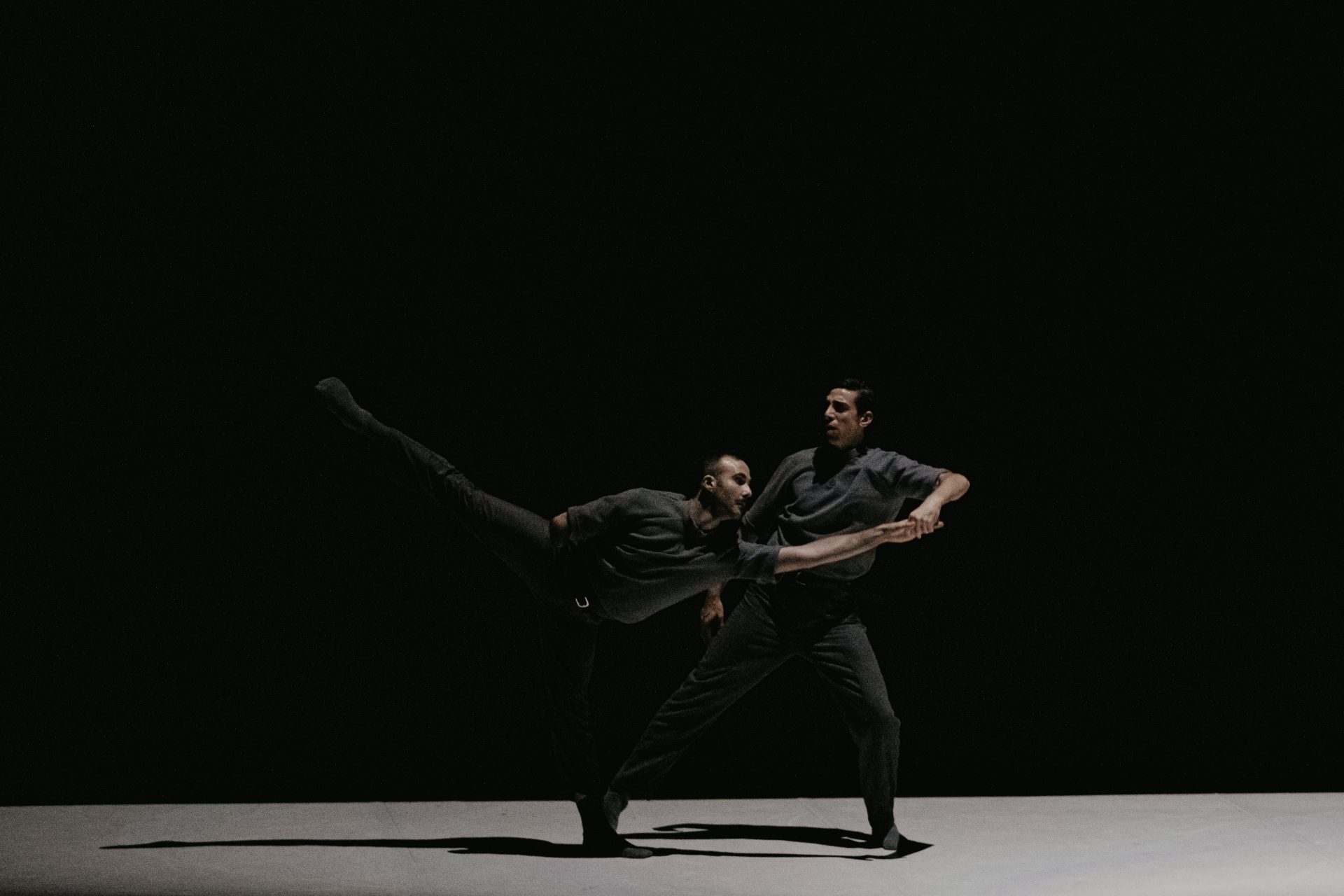Creation for one disabled dancer and one not disabled dancer
A circle, a square and, in the centre, an emblematic figure of a man.
These are the starting points of Feeling Good a duet about the ability to “be” and “feel”, a skill of contemporary dance that does not reign in a canonical form of perfection, but that finds its “being” in the acceptance of oneself, of one’s own strength and fragility which is not dictated by a symmetrical form of thinking, but which looks at the diversity of every human being in an asymmetrical way, since only diversity can destroy an idea of “canonical” beauty, which no one can please because there can be no universal model of “beauty”.
CREATION FOR AN ABLED DANCER AND A DISABLED DANCER
Choreography Diego Tortelli
Music AAVV
Lighting design Carlo Cerri
Video graphic design Michele Innocente
Dancers at Holland Dance Festival Cristian Cucco, Aristide Rontini
Dancers at Kalamata Festival, Festival Oriente Occidente, Skånes Dansteater Cristian Cucco, Annemieke Mooji
Duration 15’
A co-production Fondazione Nazionale della Danza / Aterballetto (I) and Oriente Occidente Dance Festival (I)
Within EBA Europe Beyond Access, co-funded by the Creative Europe Programme of the European Union
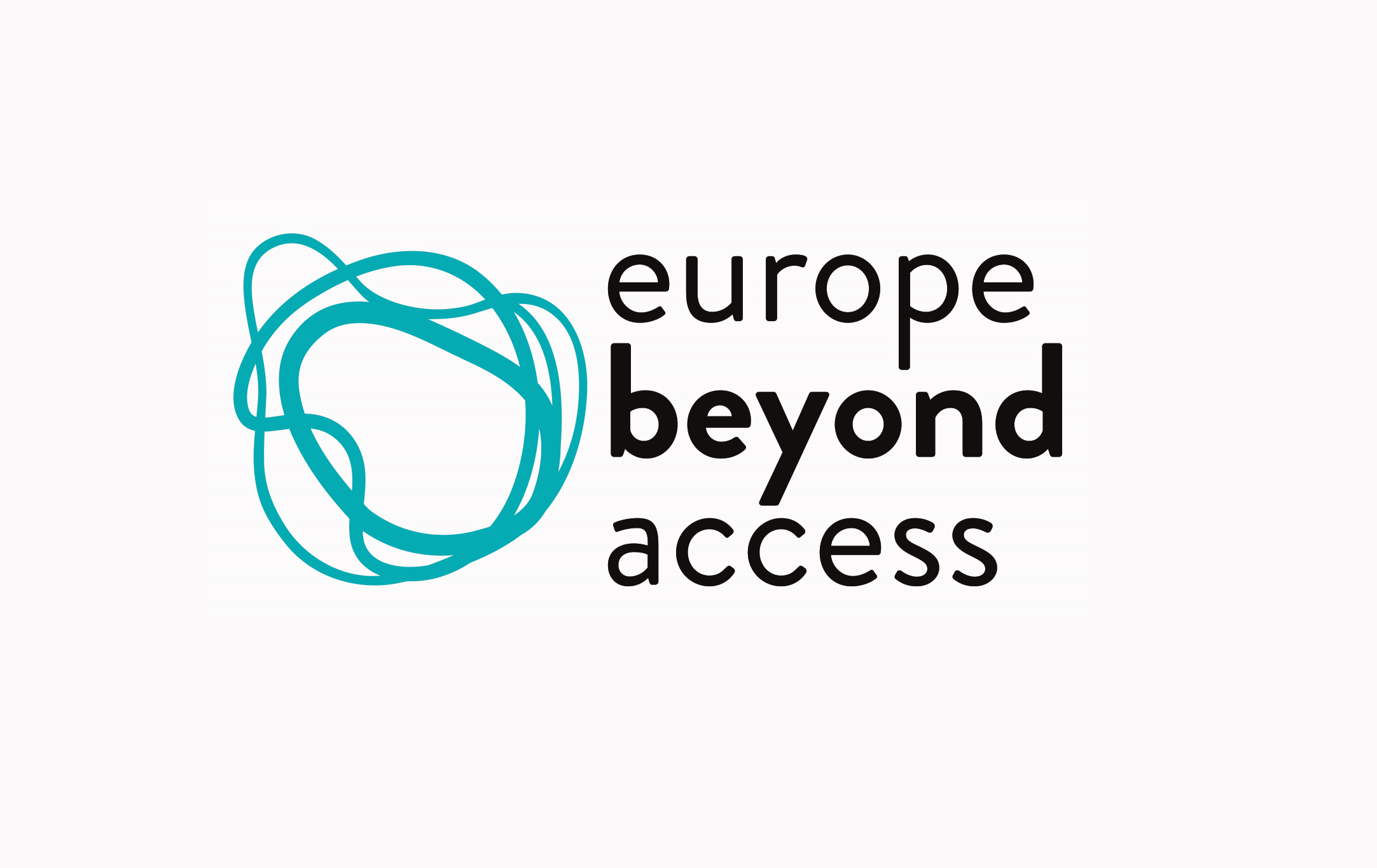

Feeling Good is part of the evening Mixed Doubles, together with other three duets produced by Onassis Cultural Centre (GR), Holland Dance Festival (NL), Skånes Dansteater (SE).
Premieres
6, 7, 8 February 2020, Holland Dance Festival, The Hague (NL)
Tour
16 July 2021, Kalamata Festival, Onassis Cultural Centre, Atene (GR)
12 September 2021, Festival Oriente Occidente, Rovereto (I)
17 – 18 November 2021, Skånes Dansteater, Malmö (SE)
Feeling Good is within “Danza e Fragilità”, a project of the Fondazione Nazionale della Danza / Aterballetto “Danza e Fragilità”, supported by Gruppo Credem in partnership with Reggio Emilia Città senza Barriere and Consorzio Oscar Romero.
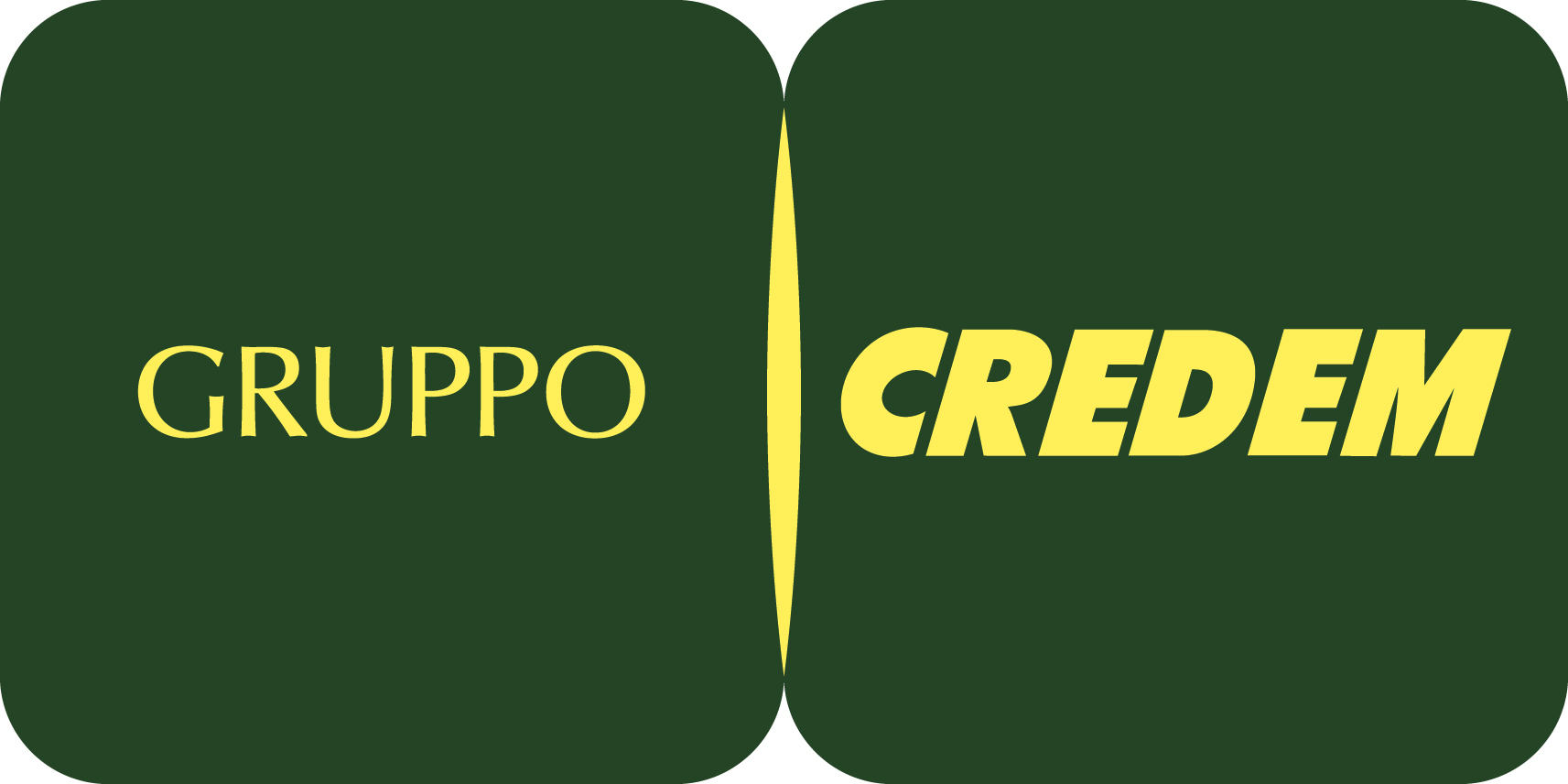
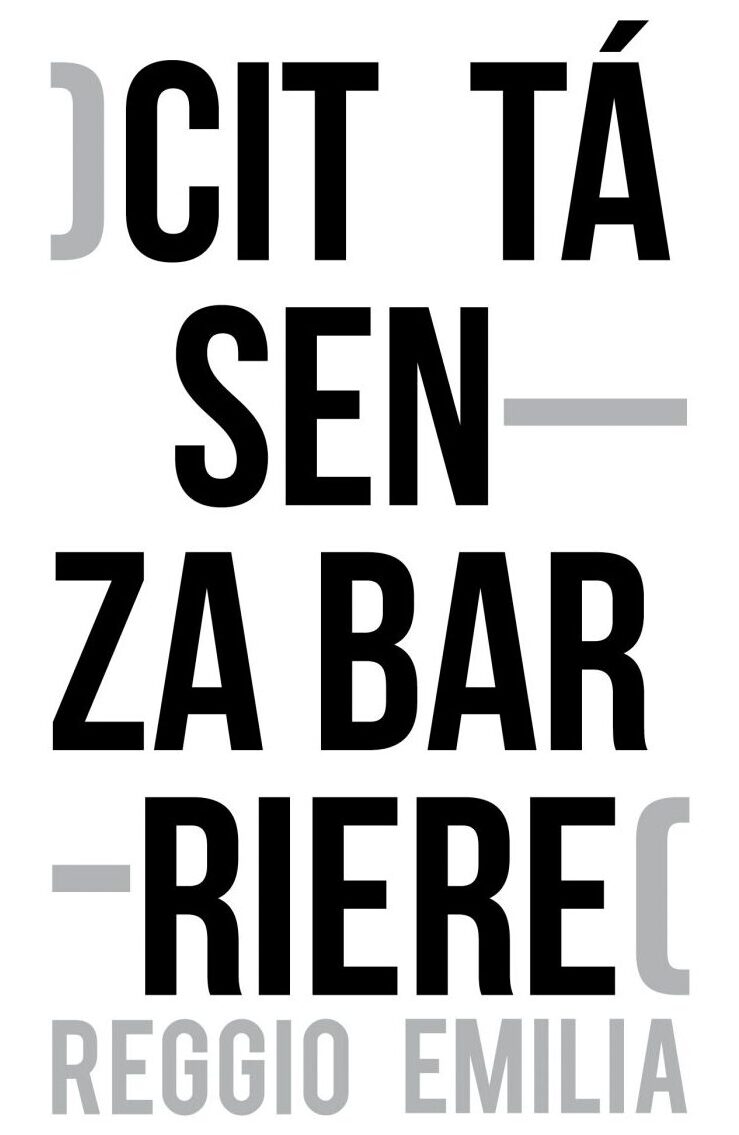
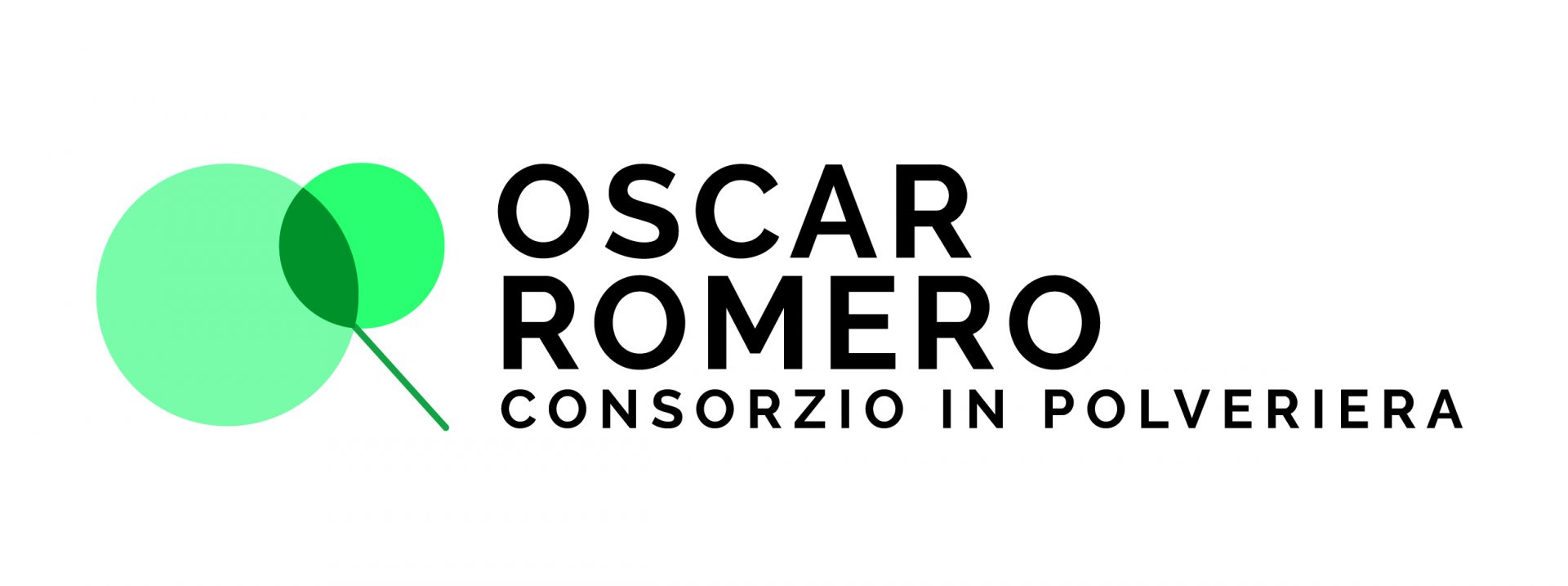
A circle, a square and, in the centre, an emblematic figure of a man.
Who does not know this extraordinary design of the Gallerie dell’Accademia di Venezia, known as the Vitruvian Man, by Leonardo da Vinci?
Certainly, the fortune of a work has very complex and, at times, mysterious motivations, but I would like to propose a critical reflection in a philosophical key the work takes on a new and very profound meaning.
Leonardo inserts the man exactly in the centre of a square. The legs, placed in a vertical position, the top of the head and the arms, open at 90° with respect to the bust, touch the sides of this geometric figure. The body, if extrapolated from the context of the other drawn limbs and the circle, seems to be in a static and stable position.
From the ancient pre-Christian civilizations to the Middle Age and the Renaissance, the square is understood as a geometric symbol that expresses the desire to horizontally move in a world that appears chaotic, through the introduction of coordinated directions.
The quadrature involves a principle of order that seems to be innate in man and that, in a dualistic system, contrasts with the circle, which represents celestial powers.
The legendary quadrature of the circle (properly the transformation of a circle into a square of equal surface, by means of geometric procedures) symbolizes the desire to bring the “celestial” and the “terrestrial” elements back to an ideal concordance.
But if the square, by its nature, expresses stability and definability, on the contrary the circle or wheel, consisting of infinite points, suggests the idea of motion and indefinability.
Note then how the second pair of limbs of Leonardo’s homo, resting on the circle, suggests a kinetic course to the human figure, which thus loses that characteristic of staticity in favour of an idea of circular motion within an ideal wheel.
From the letters of motivation on the project received from the possible disabled dancers there were many references to this emblematic figure, its representation and its geometric proportions and perfect symmetry.
What I noticed as extremely interesting was that the United Nations recently commissioned the Department of Public Information to produce a new symbol of Accessibility, named “Logo of Accessibility”.
The proposed logo symbolizes a stylized “human figure” (moving and not static on the computer) “universal with open arms” included and connected to a circle “to represent the harmony between human beings in society”.
The circle does not force the “symmetrical” human person inside, but links him/her in his/her area “to represent harmony among human beings in society”, enclosing and symbolizing instead the “global scope of this logo”. What the “human figure” expresses is its universality and “with open arms it symbolizes the inclusion for people of “all abilities”, all over the world”. The open arms presumably mean welcome and that the intent of the United Nations is that of an all-inclusive logo.
References to Vitruvian man are evident and visible and this can lead to criticism and controversy, but if we simply do not dwell on the image itself and what the eye can observe, but simply to its poetics and meaning we find the desire for a body that experiences connecting with itself and its surroundings, both on a rational and emotional level. Then perhaps the circle brings with it a sense of constant motion, acceptance, understanding and change and the square becomes that surface that we can destroy, change, modify.
These are the starting points of Feeling Good a duet about the ability to “be” and “feel”, a skill of contemporary dance that does not reign in a canonical form of perfection, but that finds its “being” in the acceptance of oneself, of one’s own strength and fragility which is not dictated by a symmetrical form of thinking, but which looks at the diversity of every human being in an asymmetrical way, since only diversity can destroy an idea of “canonical” beauty, which no one can please because there can be no universal model of “beauty”.
Diego Tortelli
Choreographer
Feeling Good is the main step of a two-year journey, supported by Gruppo Credem with the participation of the project Reggio Emilia Città senza Barriere and Consorzio Oscar Romero/La Polveriera, dedicated to the research of new and open models of choreographic virtuosity. Through the development of activities aimed at affirming not only a richer and more articulated vision of the expressive potentiality of disability, but also at facilitating the right (for those who are dedicated to it) to find opportunities to create. On this theme, we have given space to public meetings and conferences, participated in national and international networks, and programmed performances, always keeping the parameter of artistic quality at the centre, since the production of choreographic works is fundamental for us.
We were therefore lucky to work alongside Diego Tortelli, resident choreographer of the Fondazione Nazionale della Danza / Aterballetto: Tortelli is involved in Reggio Emilia at 360° in a research that leads him to work with the company, to deal with site-specific creations of various genres, and in particular to explore the theme of virtuosity in a broad sense, always focused on aesthetic enhancement, but moving away from conservative canons. And an important occasion has been outlined thanks to the proposal of Lanfranco Cis and the Festival Oriente Occidente in Rovereto, for years in the forefront in the reflection on Art and Disability. As part of EBA Europe Beyond Access, a project co-funded by the Creative Europe Programme of the European Union, shared with partners Onassis Cultural Centre (GR), Holland Dance Festival (NL), Skånes Dansteater (SE), the Fondazione Nazionale della Danza of Reggio Emilia participates as an artistic partner. And the result is the duet Feeling Good, presented on tour together with 3 “twin” creations, conceived in the Netherlands, Greece and Sweden, with the collaboration of the British Council.
Tortelli creates starting from spatial notions and aesthetic references that are always precise, using an original and fluid language that puts him at ease in contexts completely different from each other. His challenge began a year ago, working with a dancer from the company and the Paralympic fencer Emanuele Lambertini, and tracing a dialogue marked by a converging rituality between the world of dance and fencing. And now we come to a real creation for stage, which we are proud to be born in Reggio Emilia, an important city for dance, but also for overcoming barriers: physical, cultural, expressive.
Gigi Cristoforetti
Managing and Programming Director – Fondazione Nazionale della Danza / Aterballetto
At the beginning, it was Pippo Delbono. It was 2012 and the “different” bodies had aroused interest thanks to the work of the artist, to whom we dedicated that year a focus entitled “Visioni del corpo” (Visions of the body).
Then the dazzling encounter with the English company Candoco, hosted for the first time in Oriente Occidente in 2014 and then again in 2017, allowed us to question ourselves for the first time about the boundaries of language and interpretation.
Curiosity for beauty, aesthetics and contemporary practices pushed us to deepen our research, trying to expand our vision and to train ourselves and the public to a new look.
Are my eyes ready to see? To welcome diversity and to read it going beyond it? Am I ready for a performative experience that imposes the eradication of social constructs in which I have always been immersed? Am I ready to take pietism and pity out of my eye? Do I look at the artist?
Too many times we have heard “teaching dance to the disabled people” repeated; Feeling Good was born from the conviction that unconventional bodies can open and enliven choreographic research. The exploration conducted by artists with disabilities takes us into new worlds, takes us beyond the physical body, requires us to work on the limits, to overcome them, to expand the spectrum, requires the creation of new vocabularies, speech and movement. It shows our limits, our shortcomings but also the gaps to fill and the prairies to conquer. Diversity is the engine of creativity.
Lanfranco Cis
Artistic Director – Oriente Occidente Dance Festival
